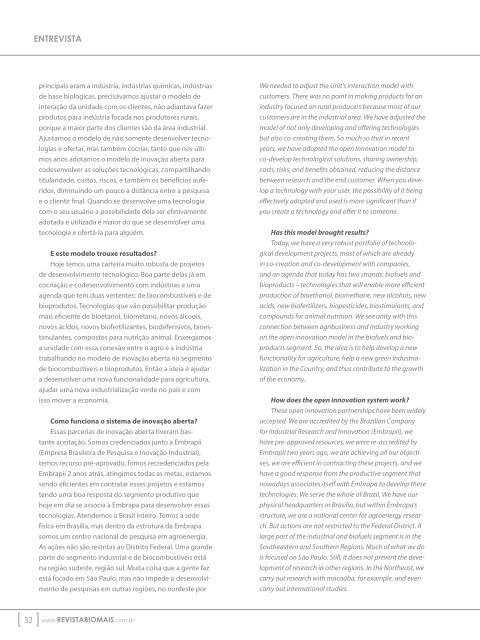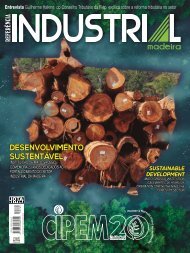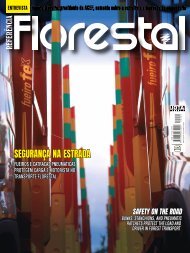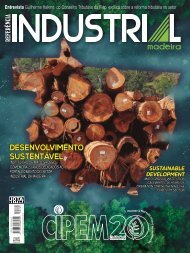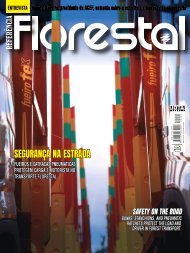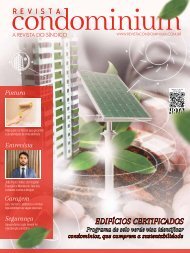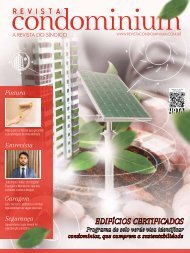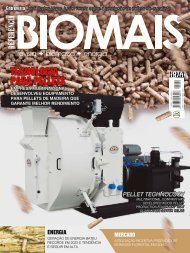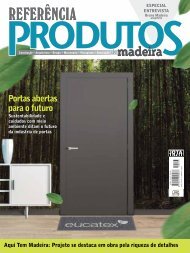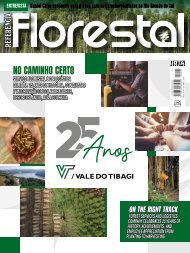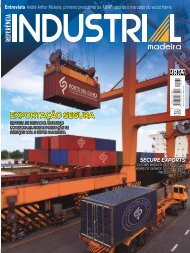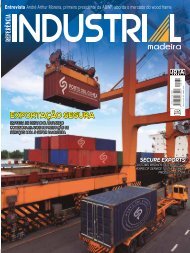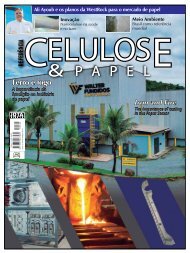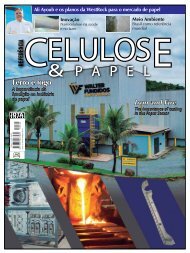You also want an ePaper? Increase the reach of your titles
YUMPU automatically turns print PDFs into web optimized ePapers that Google loves.
ENTREVISTA<br />
principais eram a indústria, indústrias químicas, indústrias<br />
de base biológicas, precisávamos ajustar o modelo de<br />
interação da unidade com os clientes, não adiantava fazer<br />
produtos para indústria focada nos produtores rurais,<br />
porque a maior parte dos clientes são da área industrial.<br />
Ajustamos o modelo de não somente desenvolver tecnologias<br />
e ofertar, mas também cocriar, tanto que nos últimos<br />
anos adotamos o modelo de inovação aberta para<br />
codesenvolver as soluções tecnológicas, compartilhando<br />
titularidade, custos, riscos, e também os benefícios auferidos,<br />
diminuindo um pouco a distância entre a pesquisa<br />
e o cliente final. Quando se desenvolve uma tecnologia<br />
com o seu usuário a possibilidade dela ser efetivamente<br />
adotada e utilizada é maior do que se desenvolver uma<br />
tecnologia e ofertá-la para alguém.<br />
E este modelo trouxe resultados?<br />
Hoje temos uma carteira muito robusta de projetos<br />
de desenvolvimento tecnológico. Boa parte delas já em<br />
cocriação e codesenvolvimento com indústrias e uma<br />
agenda que tem duas vertentes: de biocombustíveis e de<br />
bioprodutos. Tecnologias que vão possibilitar produção<br />
mais eficiente de bioetanol, biometano, novos álcoois,<br />
novos ácidos, novos biofertilizantes, biodefensivos, bioestimulantes,<br />
compostos para nutrição animal. Enxergamos<br />
a unidade com essa conexão entre o agro e a indústria<br />
trabalhando no modelo de inovação aberta no segmento<br />
de biocombustíveis e bioprodutos. Então a ideia é ajudar<br />
a desenvolver uma nova funcionalidade para agricultura,<br />
ajudar uma nova industrialização verde no país e com<br />
isso mover a economia.<br />
Como funciona o sistema de inovação aberta?<br />
Essas parcerias de inovação aberta tiveram bastante<br />
aceitação. Somos credenciados junto a Embrapii<br />
(Empresa Brasileira de Pesquisa e Inovação Industrial),<br />
temos recurso pré-aprovado, fomos recredenciados pela<br />
Embrapii 2 anos atrás, atingimos todas as metas, estamos<br />
sendo eficientes em contratar esses projetos e estamos<br />
tendo uma boa resposta do segmento produtivo que<br />
hoje em dia se associa à Embrapa para desenvolver essas<br />
tecnologias. Atendemos o Brasil inteiro. Temos a sede<br />
física em Brasília, mas dentro da estrutura da Embrapa<br />
somos um centro nacional de pesquisa em agroenergia.<br />
As ações não são restritas ao Distrito Federal. Uma grande<br />
parte do segmento industrial e de biocombustíveis está<br />
na região sudeste, região sul. Muita coisa que a gente faz<br />
está focado em São Paulo, mas não impede o desenvolvimento<br />
de pesquisas em outras regiões, no nordeste por<br />
We needed to adjust the Unit’s interaction model with<br />
customers. There was no point in making products for an<br />
industry focused on rural producers because most of our<br />
customers are in the industrial area. We have adjusted the<br />
model of not only developing and offering technologies<br />
but also co-creating them. So much so that in recent<br />
years, we have adopted the open innovation model to<br />
co-develop technological solutions, sharing ownership,<br />
costs, risks, and benefits obtained, reducing the distance<br />
between research and the end customer. When you develop<br />
a technology with your user, the possibility of it being<br />
effectively adopted and used is more significant than if<br />
you create a technology and offer it to someone.<br />
Has this model brought results?<br />
Today, we have a very robust portfolio of technological<br />
development projects, most of which are already<br />
in co-creation and co-development with companies,<br />
and an agenda that today has two strands: biofuels and<br />
bioproducts – technologies that will enable more efficient<br />
production of bioethanol, biomethane, new alcohols, new<br />
acids, new biofertilizers, biopesticides, biostimulants, and<br />
compounds for animal nutrition. We see unity with this<br />
connection between agribusiness and industry working<br />
on the open innovation model in the biofuels and bioproducts<br />
segment. So, the idea is to help develop a new<br />
functionality for agriculture, help a new green industrialization<br />
in the Country, and thus contribute to the growth<br />
of the economy.<br />
How does the open innovation system work?<br />
These open innovation partnerships have been widely<br />
accepted. We are accredited by the Brazilian Company<br />
for Industrial Research and Innovation (Embrapii), we<br />
have pre-approved resources, we were re-accredited by<br />
Embrapii two years ago, we are achieving all our objectives,<br />
we are efficient in contracting these projects, and we<br />
have a good response from the productive segment that<br />
nowadays associates itself with Embrapa to develop these<br />
technologies. We serve the whole of Brazil. We have our<br />
physical headquarters in Brasilia, but within Embrapa’s<br />
structure, we are a national center for agroenergy research.<br />
But actions are not restricted to the Federal District. A<br />
large part of the industrial and biofuels segment is in the<br />
Southeastern and Southern Regions. Much of what we do<br />
is focused on São Paulo. Still, it does not prevent the development<br />
of research in other regions. In the Northeast, we<br />
carry out research with macaúba, for example, and even<br />
carry out international studies.<br />
C<br />
M<br />
Y<br />
CM<br />
MY<br />
CY<br />
CMY<br />
K<br />
32 www.REVISTABIOMAIS.com.br


